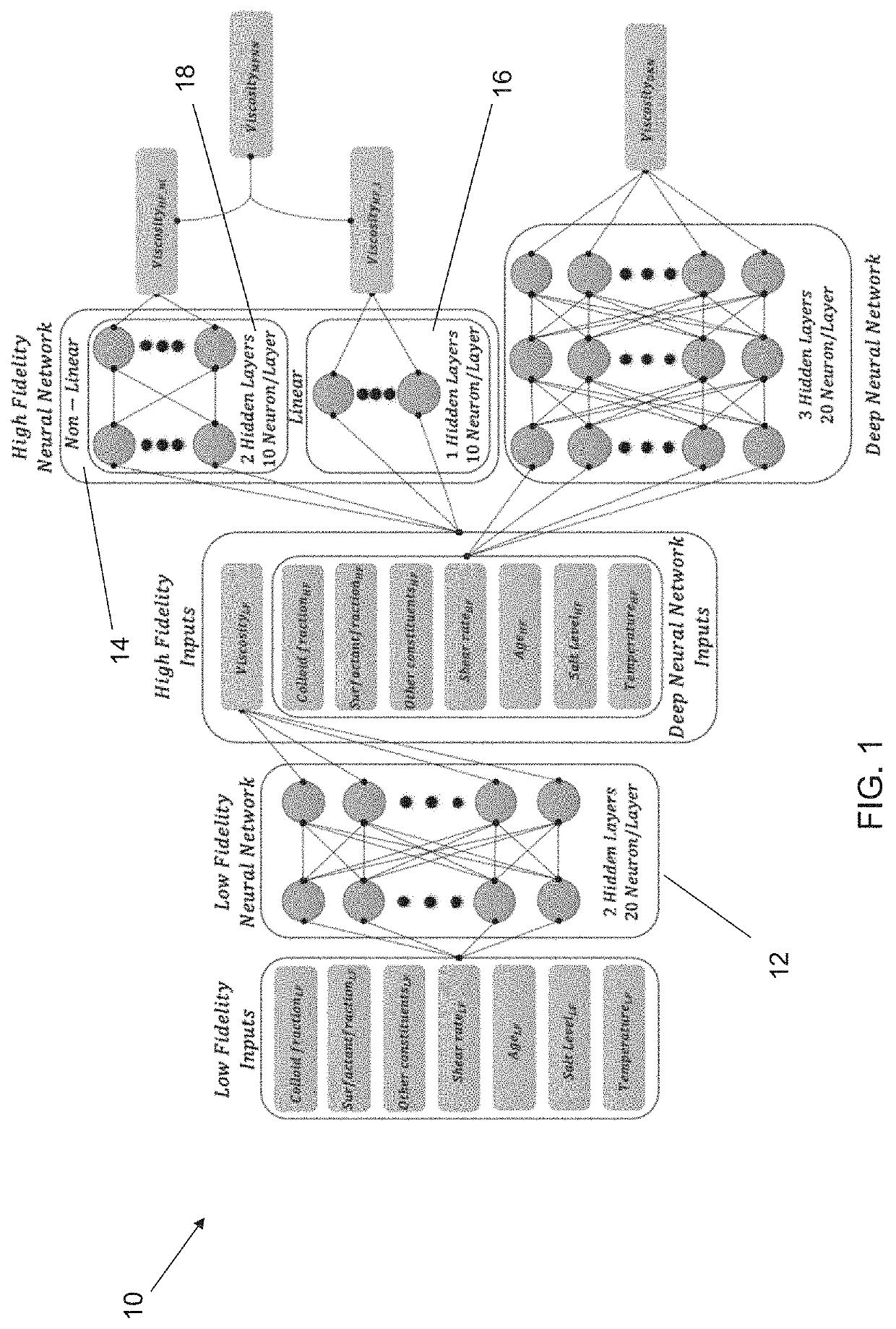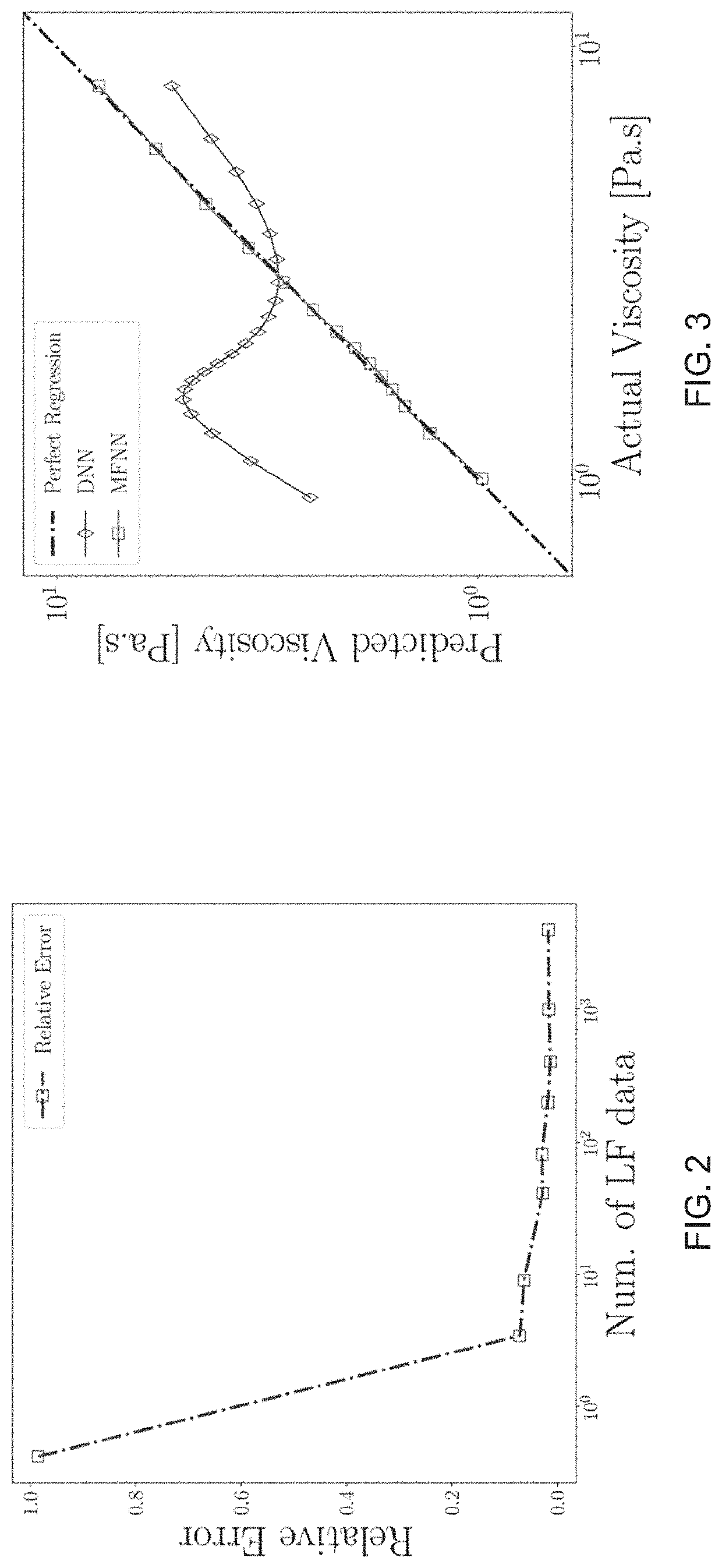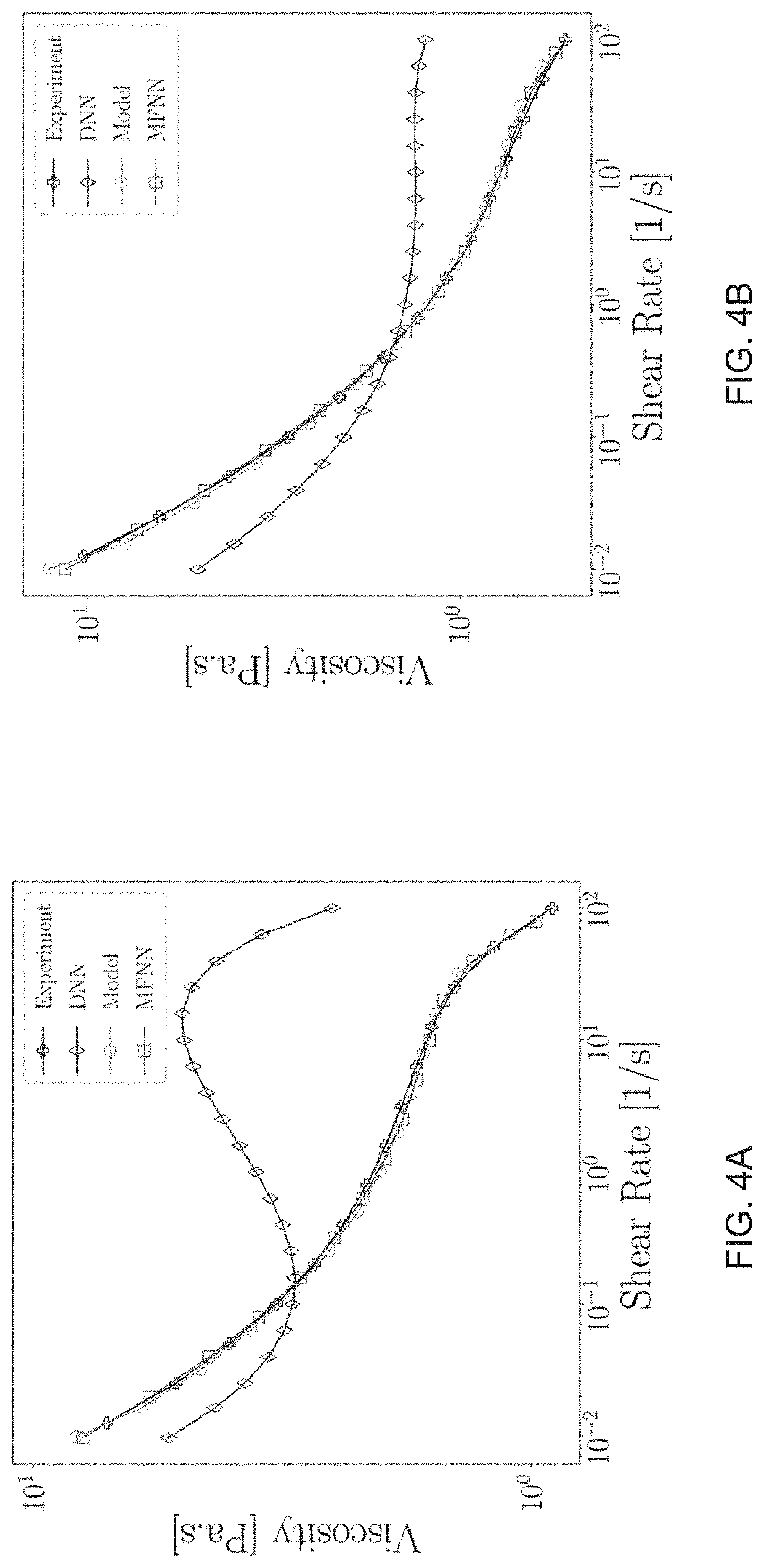Rheology-informed neural networks for complex fluids
a neural network and fluid technology, applied in the field of comprehensive machine learning algorithms, can solve the problems of limited use of such tools, erroneous rheological behavior, and general failure of packages in industrial settings to achieve the effect of predicting erroneous rheological behavior
- Summary
- Abstract
- Description
- Claims
- Application Information
AI Technical Summary
Benefits of technology
Problems solved by technology
Method used
Image
Examples
Embodiment Construction
[0033]Many complex and structured fluids exhibit a wide range of rheological responses to different flow characteristics owing to their evolving internal structures1-8. The ability to represent this complex rheological behavior through closed-form constitutive equations constructed from kinematic variables is essential in better understanding and designing these complex fluids and their processing conditions. Thus, efforts in constitutive modelling of complex fluids date back to inception of the field of rheology itself9-11. However, as the material's response to an applied deformation or stress becomes more complicated, so does the constitutive model of choice to describe such response, resulting in more model parameters and hence more experimental protocols to determine those parameters. Generalized Newtonian fluids are a class of constitutive equations in which different functional forms are designated to represent the changes in the non-Newtonian viscosity12-14. For instance, th...
PUM
| Property | Measurement | Unit |
|---|---|---|
| temperature | aaaaa | aaaaa |
| temperature | aaaaa | aaaaa |
| temperature | aaaaa | aaaaa |
Abstract
Description
Claims
Application Information
 Login to View More
Login to View More - R&D
- Intellectual Property
- Life Sciences
- Materials
- Tech Scout
- Unparalleled Data Quality
- Higher Quality Content
- 60% Fewer Hallucinations
Browse by: Latest US Patents, China's latest patents, Technical Efficacy Thesaurus, Application Domain, Technology Topic, Popular Technical Reports.
© 2025 PatSnap. All rights reserved.Legal|Privacy policy|Modern Slavery Act Transparency Statement|Sitemap|About US| Contact US: help@patsnap.com



